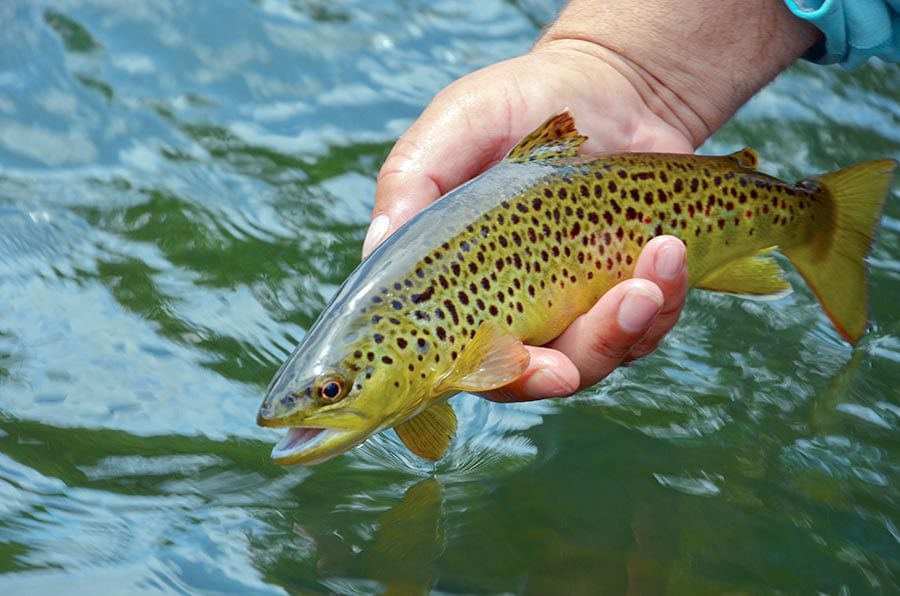(An abbreviated excerpt on Slickrock Creek from Flyfisher’s Guide to North Carolina & Georgia)
I don’t remember if I even caught a fish the first time I visited Slickrock Creek. What I do remember is the place was so gorgeous it spurred many return trips to the deep valley that runs the North Carolina/Tennessee border for a couple miles in the Joyce Kilmer-Slickrock Wilderness Area.
The old growth trees and the canopy they create over Slickrock Creek inspire awe. Dropping 1,000 feet in about a mile and a half, the hike into Slickrock on the Big Fat Gap Trail is like a steep descent into what the world must have looked like before logging. For those who trout fish because of the places it takes you, I can’t think of a prettier place to be.
The fish are pretty too. Above Lower Falls, which serves as a barrier for stocked fish moving upstream from Calderwood Lake, Slickrock is home to a population of brightly colored wild brown trout. The original and only stocking occurred in the 1930s, when the Civilian Conservation Corps carried fingerling browns in by backpack.
Slickrock Creek Range
Big ones are few and far between. A good day will yield multiple fish in the 8- to 11-inch range with an occasional bigger fish showing up. Like any wild brown trout fishery, Slickrock’s fish are sometimes hard to catch. On the other hand, when sulphurs, drakes and yellow sallies start popping off in spring it can be a ton of fun fishing dry flies.
Below Lower Falls, which is about a mile upstream from the mouth, the fishing is a little different. Fish stocked in Calderwood make their way up the creek, and some of them get pretty big. One of the largest brookies I’ve ever caught in the Southeast came from the big pool at the base of Lower Falls.
Upstream of its mouth, the creek would be considered a medium sized stream with some big pools to fish. As you work upstream, it loses flow from feeders and becomes very small in its headwaters.
Difficult Access
Difficult access by foot is a good reason to pack in and camp at Slickrock. When I was younger and in better shape, I’d drop in from Big Fat Gap and make a day trip out of it. Even then, the climb back out was brutal.
There’s an old cast iron wood stove in a clearing off the side of the trail down in the valley. It’s hard to imagine how it got down there in the first place. You’ll understand why it’s still down there when your calves start burning a quarter of the way up the switchbacks. That old stove will likely remain in the hollow for eternity.
For GPS coordinates to access points and detailed maps of all the region’s best trout water, check out “Flyfishers Guide to North Carolina & Georgia.” It is available on Amazon or by emailing the author at nsc8957@gmail.com.
by Nick Carter
